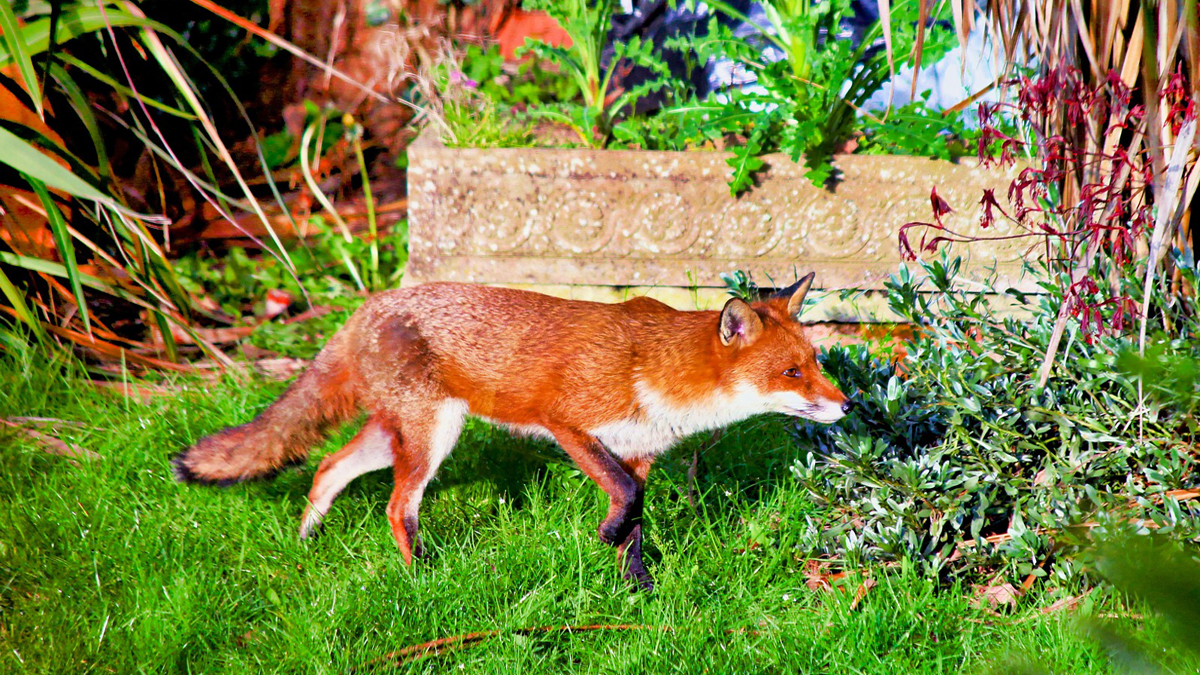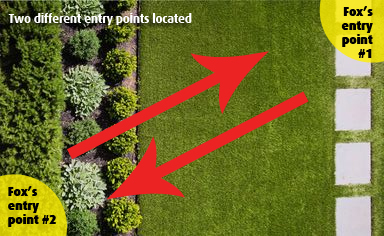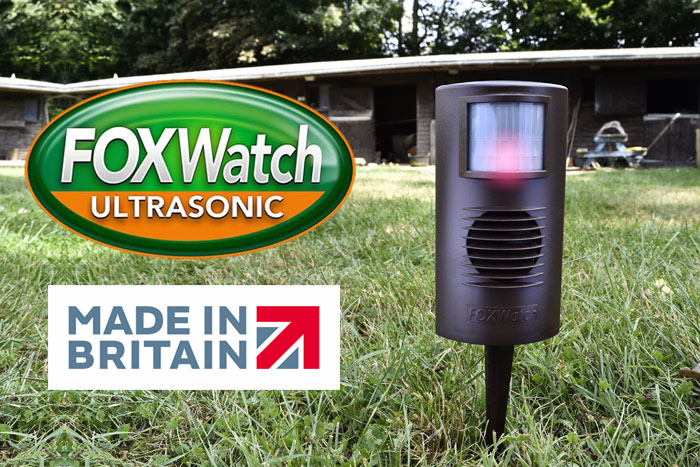What if foxes come into my garden in more than one place?
Throughout this website, we constantly stress the importance of locating the place where the fox comes into your garden.
If you want to give yourself the best chance of discouraging foxes from visiting, then identifying where they get in is an incredibly important first step on the path to success.
The reason is actually quite simple.
The entry point is the place where you have the greatest opportunity to convince a fox that your garden is not worth coming into.
Whether it’s blocking up a hole, spraying a scented repellent or installing an ultrasonic device, making the entrance to your garden as uninviting as possible will teach the fox that’s it’s easier to go elsewhere. The less time a fox spends in your garden, the less likely it is to poo, dig or cause other nuisance problems.
Now, this is all very well for people with a small garden or those who know their fox enters and leaves in exactly the same place, but what if you have a garden where the fox comes in at different places?
Locate all entry points
If you’re reading this article, then you’re probably already aware that the fox comes into your garden in more than one spot.
If you’re not exactly sure where those spots are, it’s worth spending the time watching the fox to recognise its habits and how it prefers to navigate your garden. Foxes are creatures of habit, so you should be able to work it out fairly quickly.
As foxes like to do the rounds of their territories, a common scenario involves a fox entering at one part of the garden, doing whatever it likes to do while there, and then leaving via a different place.
A short while later, it may come back and do the exact reverse as it completes its return journey (i.e. enters where it previously exited and exits where it previously entered).
In the hypothetical garden above, you can see the fox enters the garden in the top right (#1) corner and leaves via the bottom left (#2). It then comes back in the opposite direction, entering bottom left (#2) and exiting top right (#1).
This a very common way that foxes navigate urban and suburban gardens. Your garden is likely to form part of an overall, circular route that foxes take around their territories, encompassing several gardens in the local area.
The most effective course of action in this situation is to do what you can to make both entrances as unwelcoming as possible.
If you only concentrate on one entry point, you might find the fox adapts its route or simply takes the risk as it knows the second entry point is an easy escape route. You’re much more likely to teach the fox to stay away from your garden (or at least minimise its visits) if you make things difficult at all the places it comes in.
Double up on deterrents
Let’s say you’ve located two different entry points. You’ll probably find it worthwhile getting two of whatever deterrent you’re using.
This is especially important if you use a standalone deterrent device like the FoxWatch Ultrasonic Device or a motion-activated sprinkler that rely on a sensor being triggered.
These types of deterrent are great because they don’t need you to be present in order to operate, but of course, their detection range is not 360°, so you’ll need to install a second one if the other entrance falls outside of the detection zone.
An example might look like the following, using two FoxWatch units to protect two separate entry points:
In the above scenario, the first and last impression the fox will have of the garden is of the irritating high-pitched noises. This will help to teach the fox that the garden is somewhere unpleasant to visit and it will start to reduce the frequency and duration of its intrusions as a result of consistently triggering the devices.
If you’re using a scent-based deterrent like Scoot Fox Repellent, then you’ll need to spray it at the two entry points (and anywhere else the fox has been scent-marking) every few days for a couple of weeks.
Don’t make the mistake of only spraying it once and thinking that will be enough. Foxes need to encounter a deterrent repeatedly in order for it to break their habits and change their behaviour.
Change your garden’s atmosphere
Up until now, the fox has probably had a free reign over your garden – coming in and out as it pleases without any reason for it to think it shouldn’t be there.
You need to change this mindset and disrupt its normal pattern of behaviour.
Have a look at your garden and think about what you can do to the entry point.
In addition to using the aforementioned deterrents:
– Can you put a potted plant in the way?
– Could you install some plastic spikes along the top of a fence or wall, or any other ledges it uses to get in?
– What about putting some prickle strips on the ground where it drops down into the garden?
– Would chicken wire just under the soil help it stop burrowing underneath the fence?
These are just a few simple examples, but anything you can do to make things awkward for the fox will force it to make extra decisions about whether or not it’s worth entering your garden.
Give it a reason to think twice.
Foxes really don’t like change, so the discovery that their access points to your garden are now effectively booby-trapped will cause them to view your garden as potentially risky, dangerous or irritating.
A nervous, irritated or uncomfortable fox is far more likely to reduce its visits to your garden, so the more you can do at each entry point to create a negative impression, the better.
Once you’ve changed the atmosphere of your garden by protecting the entry points, you need to stick with it and be patient.
Be more persistent than the fox
You must remember that you are dealing with a very intelligent and inquisitive animal. This means that you have to be patient and give the changes you’ve made a chance to take effect.
Once a fox discovers something different about your garden, it will be back again to see if this new inconvenience is a one-off or something permanent.
You need to ensure the fox gets the message that this new situation is permanent by being consistent with your efforts. Don’t get discouraged if your efforts don’t instantly eradicate all trace of the fox.
Successful fox deterrence is a gradual process as the fox naturally learns to reduce the frequency and duration of its visits to your garden. You’re basically training a wild animal to behave differently – this takes time.
It’s also why the standalone fox deterrents like the ultrasonic devices are so effective, especially for gardens with multiple entry points.
You set them up initially, but then they provide that consistent permanent protection without repeated time and effort from you.
It’s not an exact science, but by being patient and consistent, you will start to see improvements.
The British-made FoxWatch Ultrasonic Fox Deterrent is available in our online store. Priced at £69.95, it includes a 12-Volt mains adapter, full operating instructions, 90-day moneyback guarantee, 2-year manufacturer’s warranty and free UK delivery.
Some of the resources below may contain affiliate links, which means we receive a commission (at no extra cost to you) if you use that link to make a purchase. We appreciate your use of these links as it helps to keep this website running!





 Photo credit: Victoria, Hampshire
Photo credit: Victoria, Hampshire
 Photo credit: Adam Lowly | Pexels.com
Photo credit: Adam Lowly | Pexels.com Photo credit: Concept Research
Photo credit: Concept Research




